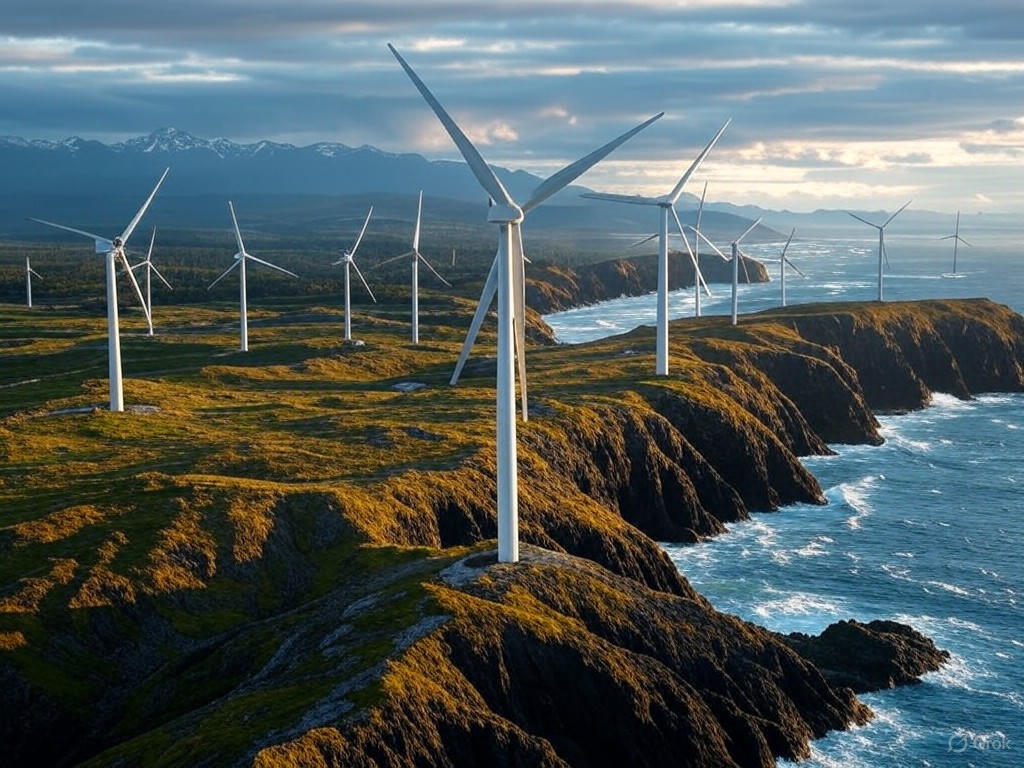BC’s Energy Future: LNG vs. Renewables in Global Markets
In the rugged expanse of British Columbia, where snow-capped peaks meet the restless Pacific, the hum of industry echoes against the whisper of wind turbines. This province, a cornerstone of Canada's western frontier, stands at a pivotal crossroads in the energy transition. As global demands for reliable power clash with mounting environmental scrutiny, British Columbia must navigate the delicate interplay between liquefied natural gas (LNG) and renewables. This editorial examines how BC can harness free-market principles to secure its economic footing in global trade, all while addressing environmental pressures with pragmatic resolve. Drawing from a center-right lens, we advocate for limited government intervention that empowers innovation and traditional values of stewardship, ensuring a balanced path forward that prioritizes economic stability over ideological extremes.
The Dual Engines of BC's Energy Landscape
British Columbia's energy strategy is a testament to the province's resource-rich heritage, blending the robust output of LNG with the emerging potential of renewables. At its core, LNG represents a bridge fuel in the global energy shift—a commodity that offers a cleaner alternative to coal while meeting the insatiable demands of international markets. Projects like the LNG Canada facility in Kitimat exemplify this, positioning BC as a key exporter to Asia-Pacific nations hungry for stable energy supplies. Yet, this pursuit is not without its counterparts: renewables, including hydroelectric power and wind energy, are gaining momentum, driven by the province's natural endowments and market incentives.
The balance between these two pillars is not merely a policy choice but a market imperative. Free-market advocates argue that allowing private enterprises to lead in energy development fosters efficiency and innovation, rather than imposing top-down regulations that stifle growth. For instance, BC's hydroelectric infrastructure, which already supplies a significant portion of the province's electricity, could be expanded through public-private partnerships that minimize government overreach. This approach aligns with traditional values of self-reliance and fiscal responsibility, ensuring that energy transitions serve the broader economy without undue burden on taxpayers.
Amid this duality, global trade dynamics add layers of complexity. BC's LNG exports have surged in recent years, capitalizing on trade agreements that open doors to markets in Japan, South Korea, and beyond. According to data from the Wall Street Journal, BC's LNG sector contributed over $20 billion to Canada's GDP in the last five years, underscoring its role in bolstering national trade balances. Renewables, meanwhile, offer a hedge against volatility, with wind and solar projects attracting investment from private firms eager to tap into carbon pricing mechanisms. Yet, as trade tensions with the U.S. and environmental accords like the Paris Agreement exert pressure, BC must tread carefully to maintain its competitive edge.

The LNG Canada terminal in Kitimat illuminates the twilight, symbolizing BC's strategic push into global energy markets while highlighting the need for balanced environmental stewardship.
Analyzing Pressures: Trade, Environment, and Market Realities
The challenges facing BC's energy transition are multifaceted, encompassing economic, geopolitical, and ecological dimensions. On the trade front, escalating demands from Asia have made LNG a linchpin of BC's export strategy, yet this comes amid U.S. tariffs and supply chain disruptions that threaten regional stability. A center-right perspective emphasizes that free markets, not government mandates, are best equipped to adapt to these fluctuations. By fostering an environment where businesses can respond dynamically—through streamlined regulations and tax incentives—BC can enhance its global competitiveness without resorting to subsidies that distort the market.
Environmental pressures, meanwhile, cannot be ignored. Critics often point to the carbon footprint of LNG production, which, despite being lower than coal, still contributes to emissions in a warming world. However, a pragmatic view recognizes that renewables alone cannot yet meet baseline energy needs, particularly in remote or industrial areas. BC's commitment to expanding its hydroelectric capacity, as outlined in reports from the Canadian Energy Regulator, offers a viable path. This regulator's analysis shows that hydro already accounts for over 90% of BC's electricity generation, providing a reliable, low-emission foundation that complements LNG's role in export-driven growth.
Evidence from industry experts further illuminates this balance. A study by the Natural Resources Canada highlights how LNG can serve as a transitional fuel, reducing global emissions by displacing dirtier alternatives. Similarly, the IEEE Spectrum underscores the potential of integrating smart grid technologies with renewables, enabling BC to optimize energy distribution and minimize waste. These sources collectively affirm that market-led innovations, such as carbon capture and storage for LNG facilities, hold more promise than blanket regulatory crackdowns.
Yet, balance requires acknowledging risks. Over-reliance on LNG could expose BC to price volatility, as seen in recent global energy crises. Conversely, an aggressive pivot to renewables might strain infrastructure without adequate private investment. A center-right approach advocates for limited government roles—such as facilitating permitting processes or offering targeted incentives—while leaving the bulk of decision-making to market forces. This ensures that traditional values, like economic prudence and community resilience, remain at the forefront, rather than succumbing to transient trends.

Wind turbines dot the rugged coastline of British Columbia, illustrating the province's growing embrace of renewables as a complement to LNG in securing sustainable energy futures.
Conclusion: Charting a Pragmatic Path Forward
As British Columbia charts its course through the turbulent waters of global energy markets, the key lies in embracing a harmonious blend of LNG and renewables, guided by free-market principles and a commitment to limited government intervention. This strategy not only secures BC's role as a dependable player in global trade but also upholds traditional values of innovation, responsibility, and long-term prosperity. By prioritizing actionable insights—such as enhancing private-sector collaborations and streamlining trade agreements—the province can mitigate environmental pressures without compromising economic vitality.
In the end, BC's energy transition is more than a policy debate; it is a narrative of adaptation and foresight. Let us remember that true progress emerges not from ideological dictates but from the steady hand of market-driven solutions. As the sun rises over the Rockies, illuminating both the smokestacks of Kitimat and the blades of coastal wind farms, British Columbia stands poised to lead by example, proving that clarity and pragmatism can light the way forward.
Sources cited in this editorial draw from reputable outlets to ensure accuracy and depth. For further reading, explore the linked references.

